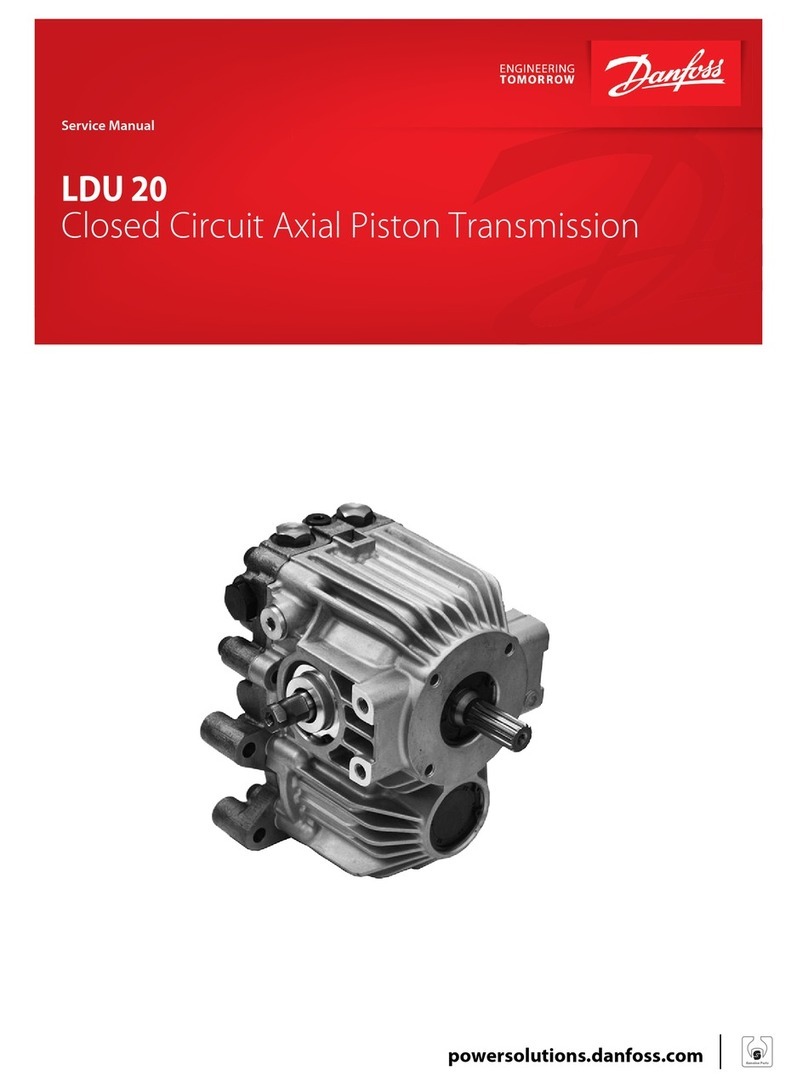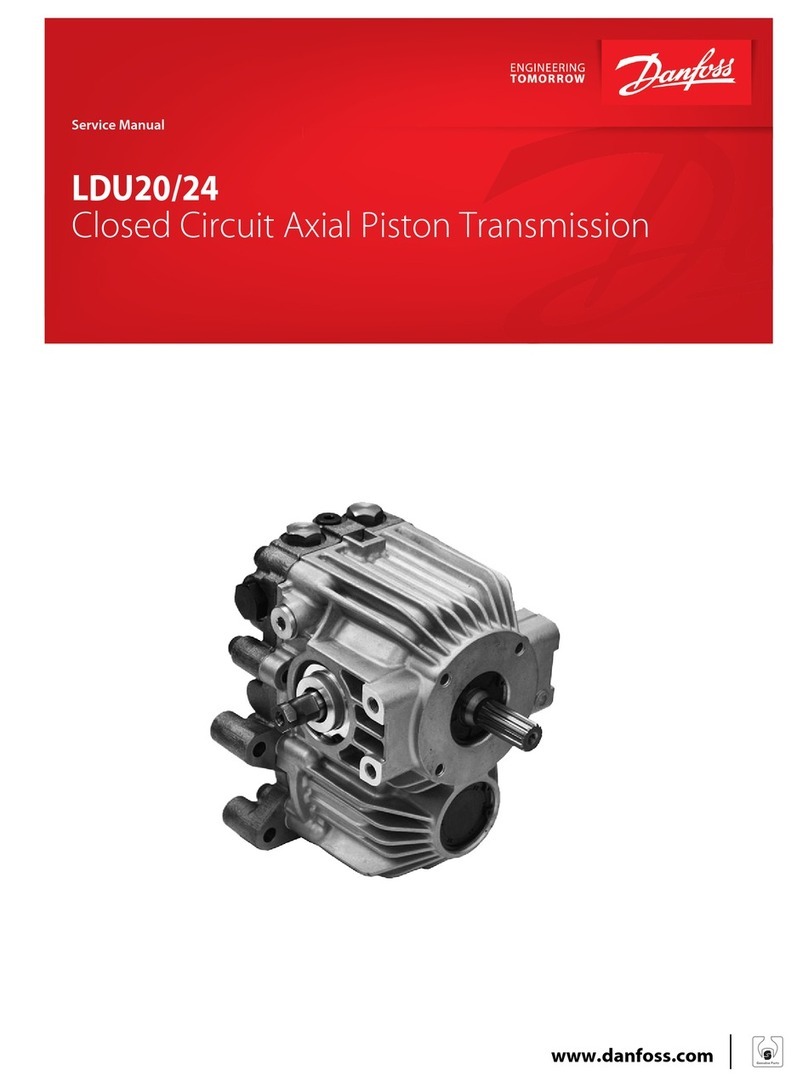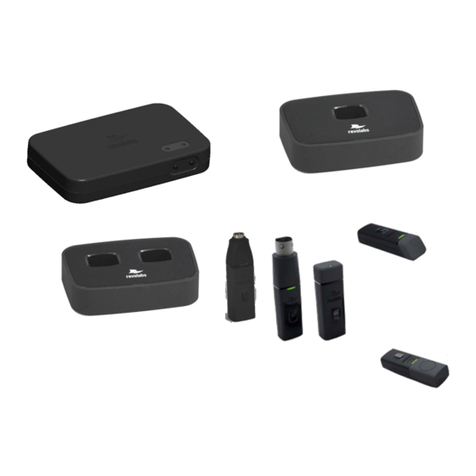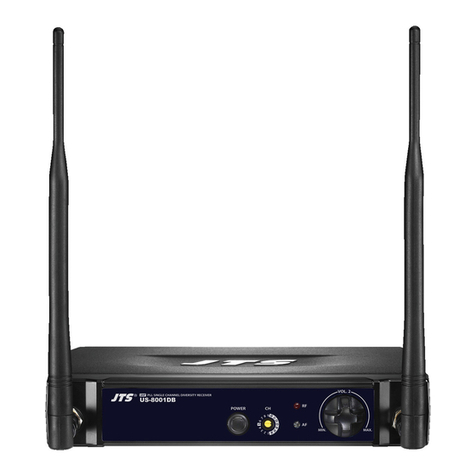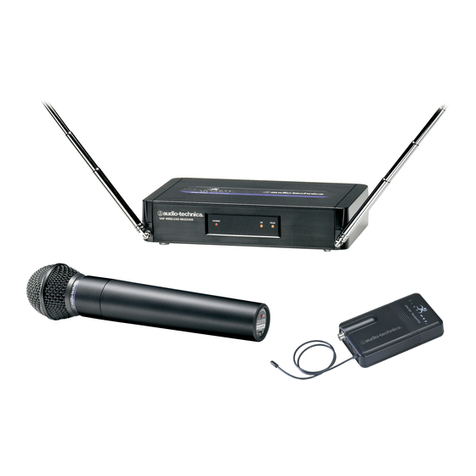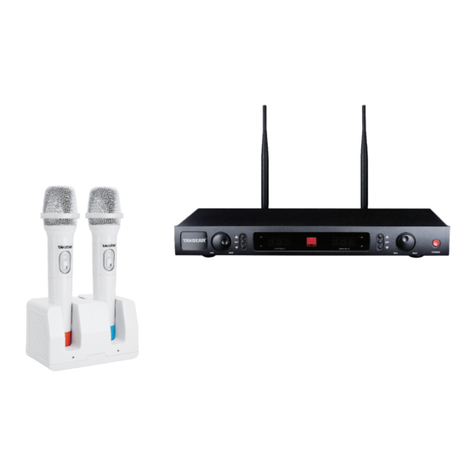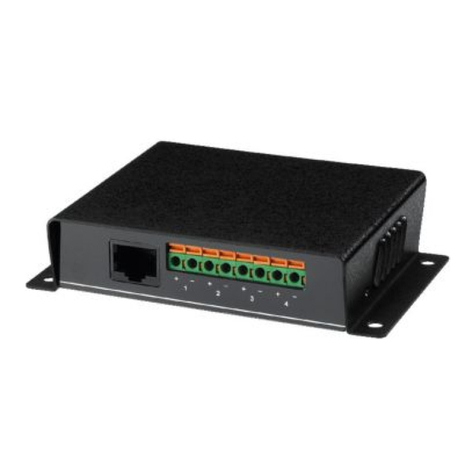Danfoss LDT 21 User manual

Revision history Table of revisions
Date Changed Rev
June 2022 First edition 0101
Service Manual
LDT 21/24/32 Closed Circuit Axial Piston Transmission
2 | ©Danfoss | June 2022 AX417167456877en-000101

Introduction Overview..............................................................................................................................................................................................5
Warranty.............................................................................................................................................................................................. 5
General Instructions........................................................................................................................................................................ 5
Remove the unit..........................................................................................................................................................................5
Keep it clean..................................................................................................................................................................................5
Lubricate moving parts.............................................................................................................................................................5
Replace all O-rings and gaskets............................................................................................................................................. 5
Secure the unit.............................................................................................................................................................................5
Safety Precautions............................................................................................................................................................................5
Unintended machine movement..........................................................................................................................................6
Flammable cleaning solvents.................................................................................................................................................6
Fluid under pressure..................................................................................................................................................................6
Personal safety.............................................................................................................................................................................6
Hazardous material.................................................................................................................................................................... 6
General Description Basic Design........................................................................................................................................................................................7
Key Features....................................................................................................................................................................................... 7
Typical Applications........................................................................................................................................................................ 7
LDT Schematics.................................................................................................................................................................................7
Operations Check / High Pressure Relief Valve ............................................................................................................................................9
Check/High Pressure Relief Valve with Orifice.......................................................................................................................9
CPRV (Charge Pressure Relief Valve)....................................................................................................................................... 10
Control............................................................................................................................................................................................... 11
Direct Displacement Control................................................................................................................................................11
Control Handle Requirements............................................................................................................................................. 11
Operating Parameters Overview........................................................................................................................................................................................... 12
Input / Output Speed....................................................................................................................................................................12
System Pressure..............................................................................................................................................................................12
Input Power......................................................................................................................................................................................12
Charge Pressure..............................................................................................................................................................................12
Case pressure...................................................................................................................................................................................13
Viscosity.............................................................................................................................................................................................13
Temperature....................................................................................................................................................................................13
Technical Specifications General Specifications..................................................................................................................................................................14
Physical Properties.........................................................................................................................................................................14
Operating Parameters..................................................................................................................................................................14
Fluid Specifications....................................................................................................................................................................... 15
Fluid and Filter MaintenanceFluid and Filter Recommendations......................................................................................................................................... 16
Pressure Measurements LDT24 Port Locations and Gauge Installation..................................................................................................................... 17
Startup procedures Startup Procedure..........................................................................................................................................................................18
Troubleshooting Overview........................................................................................................................................................................................... 19
System Operating Hot..................................................................................................................................................................19
Transmission Operates Normally in One Direction Only.................................................................................................19
System will not Operate in Either Direction.........................................................................................................................19
System Noise or Vibration...........................................................................................................................................................19
Sluggish System Response.........................................................................................................................................................20
Service Manual
LDT 21/24/32 Closed Circuit Axial Piston Transmission
Contents
©Danfoss | June 2022 AX417167456877en-000101 | 3

Required Tools and Standard Procedures
Required Tools................................................................................................................................................................................ 21
Standard Procedures.................................................................................................................................................................... 21
Charge Check/HPRV Adjustments...........................................................................................................................................21
Checking for proper charge check/HPRV operation....................................................................................................21
Minor Repair Shaft Seals.........................................................................................................................................................................................22
Removal........................................................................................................................................................................................22
Inspection....................................................................................................................................................................................22
Assembly......................................................................................................................................................................................22
Charge Check/HPRV......................................................................................................................................................................23
Removal........................................................................................................................................................................................23
Inspection....................................................................................................................................................................................23
Reassembly.................................................................................................................................................................................23
Torque Chart LDT24 Plug Size and Torque Chart..........................................................................................................................................24
Service Manual
LDT 21/24/32 Closed Circuit Axial Piston Transmission
Contents
4 | ©Danfoss | June 2022 AX417167456877en-000101

Overview
This manual includes information on the installation, maintenance, and minor repair of LDT21/24/32
transmission (HST). It includes a description of the unit and its individual components, troubleshooting
information, and minor repair procedures.
Performing minor repairs may require removal from the vehicle/machine. Thoroughly clean the unit
before beginning maintenance or repair activities. Since dirt and contamination are the greatest enemies
of any type of hydraulic equipment, follow cleanliness requirements strictly. This is especially important
when changing the system filter and when removing hoses or plumbing.
A worldwide network of Danfoss Authorized Service Centers is available for major repairs. Danfoss trains
and certifies Authorized Service Centers on a regular basis. You can locate your nearest Authorized
Service Center using the distributor locator at www.danfoss.com.
Warranty
Performing installation, maintenance, and minor repairs according to the procedures in this manual will
not affect your warranty. Major repairs requiring the removal of the units center section voids the
warranty unless completed by a Danfoss Global Service Partner.
General Instructions
Follow these general procedures.
Remove the unit
Prior to performing major repairs, remove the unit from the vehicle/machine. Chock the wheels on the
vehicle or lock the mechanism to inhibit movement. Be aware that hydraulic fluid may be under high
pressure and/or hot. Inspect the outside of the HST and fittings for damage. Cap hoses and plug ports
after removal to prevent contamination.
Keep it clean
Cleanliness is a primary means of assuring satisfactory HST life, on either new or repaired units. Clean the
outside of the HST thoroughly before disassembly. Take care to avoid contamination of the system ports.
Cleaning parts using a clean solvent wash and air drying is usually adequate.
As with any precision equipment, keep all parts free of foreign materials and chemicals. Protect all
exposed sealing surfaces and open cavities from damage and foreign material. If left unattended, cover
the transmission with a protective layer of plastic.
Lubricate moving parts
During assembly, coat all moving parts with clean hydraulic fluid. This assures that these parts are
lubricated during start-up.
Replace all O-rings and gaskets
Danfoss recommends you replace all O-rings, seals, and gaskets during repair.Lightly lubricate all O-rings
with clean petroleum jelly prior to assembly. Grease must be soluable in hydraulic fluid.
Secure the unit
For major repair, place the unit in a stable position with the shaft pointing downward. It is necessary to
secure the transmission while removing and torquing components and fasteners.
Safety Precautions
Always consider safety precautions before beginning a service procedure. Protect yourself and others
from injury. Take the following general precautions whenever servicing a hydraulic system.
Service Manual
LDT 21/24/32 Closed Circuit Axial Piston Transmission
Introduction
©Danfoss | June 2022 AX417167456877en-000101 | 5

Unintended machine movement
W
Warning
Unintended movement of the machine or mechanism may cause injury to the technician or bystanders.
To protect against unintended movement, secure the machine or disable/disconnect the mechanism
while servicing.
Flammable cleaning solvents
W
Warning
Some cleaning solvents are flammable. To avoid possible fire, do not use cleaning solvents in an area
where a source of ignition may be present.
Fluid under pressure
W
Warning
Escaping hydraulic fluid under pressure can have sufficient force to penetrate your skin causing serious
injury and/or infection. This fluid may also be hot enough to cause burns. Use caution when dealing with
hydraulic fluid under pressure. Relieve pressure in the system before removing hoses, fittings, gauges, or
components. Never use your hand or any other body part to check for leaks in a pressurized line. Seek
medical attention immediately if you are cut by hydraulic fluid.
Personal safety
W
Warning
Protect yourself from injury. Use proper safety equipment, including safety glasses, at all times.
Hazardous material
W
Warning
Hydraulic fluid contains hazardous material. Avoid prolonged contact with hydraulic fluid. Always
dispose of used hydraulic fluid according to environmental regulations.
Service Manual
LDT 21/24/32 Closed Circuit Axial Piston Transmission
Introduction
6 | ©Danfoss | June 2022 AX417167456877en-000101

Basic Design
LDT21/24/32 is a U-style hydrostatic transmission with a Z-shaft configuration, including a closed circuit
variable displacement piston pump with DDC (Direct displacement control) and a fixed motor.
LDT21/24/32 is specially designed with optimized performance, size, and cost, in order to fulfill the
demand of the mobile applications marketplace. This document provides the detailed specifications and
features for LDT21/24/32.
Key Features
•Easy to use design as a complete hydrostatic transmission package for compact utility tractors
ranging from 22 hp to 40 hp
•Compact design
•U-style layout in one housing with Z-shaft configuration
•Requires external charge flow
•LDT21/24 feature 85mm between pump and motor shaft centers, identical to BDU21 and LDU20.
LDT32 shaft center distance is 105mm
•Best in class efficiency, utilizing female piston and male slipper design; overall efficiency of
approximately 80% is possible
•Improved life kit, higher duty cycle capability while providing the most compact design in this class of
hydrostatic transmission
•Low trunnion operating force
•Serviced by Danfoss' global network
Typical Applications
•Compact utility tractor
LDT Schematics
LDT21 hydraulic schematic
Service Manual
LDT 21/24/32 Closed Circuit Axial Piston Transmission
General Description
©Danfoss | June 2022 AX417167456877en-000101 | 7

LDT24 hydraulic schematic
MB1 EM3 L3 MB2
MA2
L2L1MA1
LDT32 hydraulic schematic
MB1 EL3 MB2
MA2L2L1MA1
Service Manual
LDT 21/24/32 Closed Circuit Axial Piston Transmission
General Description
8 | ©Danfoss | June 2022 AX417167456877en-000101

Check / High Pressure Relief Valve
LDT21/24/32 is equipped with a combination high pressure relief and charge check valve. The high-
pressure relief function is a dissipative (with heat generation) pressure control valve for the purpose of
limiting excessive system pressures. The charge check function acts to replenish the low-pressure side of
the working loop with charge oil. Each side of the transmission loop has a dedicated HPRV valve that is
non-adjustable with a factory set pressure. When system pressure exceeds the factory setting of the
valve, oil is passed from the high pressure system loop, into the charge gallery, and into the low pressure
system loop via the charge check or into the transmission case via charge pressure relief valve (CPRV).
C
Caution
The High Pressure Relief Valve (HRPV) function is intended for short duration over-pressure protection /
regulation only.
Check/High Pressure Relief Valve with Orifice
Check/High pressure relief valve with orifice
As an option, LDT21/24/32 offers check / HPRV with an orifice produce a larger neutral deadband.
In some applications, it is desirable to use check / HPRV with an orifice to expand null dead band, which
would help provide a larger margin of safety for vehicle movement in neutral and provide easier
adjustment of the vehicle linkage for machine neutral. The orifice connects the working loop, which is a
main hydraulic circuit, to a charge circuit. It always allows some internal leakage to ensure the expanding
null dead band around neutral position of control shaft. However, it decreases the volumetric efficiency,
particularly at high system pressure in the working loop. Check / HPRV with an orifice has possibility to
increase downhill creep. It is recommended to install the orifice in a specific working loop, which is
pressurized when the vehicle moves in reverse.
The HPRV are set at the following flow rates
Valve LDT21 LDT24 LDT32
Check / HPRV without
orifice 6 l/min [1.6 US gal/min] 4.7 l/min [1.3 US gal/min] 4.7 l/min [1.3 US gal/min]
check / HPRV with orifice 18 l/min [4.8 US gal/min] N/A N/A
P400005
C
Caution
HPRVs are factory set at a low flow condition. Any application or operating condition which leads to
elevated HPRV flow will cause a pressure rise with flow above a valve setting. Consult factory for
application review.
C
Caution
The High Pressure Relief Valve (HRPV) function is intended for short duration over-pressure protection /
regulation only.
Service Manual
LDT 21/24/32 Closed Circuit Axial Piston Transmission
Operations
©Danfoss | June 2022 AX417167456877en-000101 | 9

CPRV (Charge Pressure Relief Valve)
The charge pressure relief valve maintains charge pressure at a designated level above case pressure. The
charge pressure relief valve is a direct acting poppet valve which opens and discharges fluid to the
hydrostatic transmission case when pressure exceeds a designated level. For external charge flow the
CPRV is set according to below table. The charge pressure relief valve setting is specified on the model
code of the unit.
Charge Pressure Relief Valve settings for external charge supply
LDT Size Flow, l/min [US gal/min]
LDT21 7.0 [1.9]
LDT24 10.8 [2.9]
LDT32 13.8 [3.6]
LDT21 CPRV LDT24 CPRV LDT32 CPRV
Charge Pressure
Charge Pressure
Charge Pressure
Service Manual
LDT 21/24/32 Closed Circuit Axial Piston Transmission
Operations
10 | ©Danfoss | June 2022 AX417167456877en-000101

Control
Direct Displacement Control
The LDT21/24/32 features direct displacement control (DDC).The swashplate angle is set directly by a
control lever or linkage attached directly to the swashplate trunnion. Control lever movement changes
the speed and rotating direction of the motor by increasing or decreasing the swashplate angle.
LDT Control Handle Requirements
The minimum torque necessary to hold the swashplate at a zero angle will vary due to the influence of
pump operating conditions.
The control handle linkage / design provided by the customer is required to provide maximum angle
stops and should not rely on the internal hard stops in the LDT. This applies to both directions of the
trunnion rotation.
The LDT24 features two threaded (M10) holes near the trunnion. Contact Danfoss for proper application
guidelines if these holes are intended to be used for a neutral return mechanism.
Control Moments / Deadband LDT21 LDT24 LDT32
Stroke decreasing moment at max working system pressure, full
stroke, 2500 RPM input speed, 30 mm2/sec. N·m [lbf·in] 8.6 [76] 20 [177] 20 [177]
Minimum return spring force at neutral, N·m [lbf·in] 10 [89] 10 [89] 18 [160]
Neutral deadband, 3000 RPM, no load, 30 mm2/sec, with orifice 0.5° 0.5° 0.5°
Neutral deadband, 3000 RPM, no load, 30 mm2/sec, without
orifice 1° 1° 1°
Input shaft rotation (as seen from input shaft) CW
Trunnion location (as seen from input shaft) Left
Output Shaft Rotation (as seen from output shaft) CW CCW
Control Shaft Rotation (as seen from control shaft) CW(b) CCW(a)
High Pressure Port MB MA
Low Pressure Port MA MB
W
Warning
Neutral return mechanism (not supplied with the product) must be able to overcome on-stroking
moments at any operating condition.
W
Warning
With no external forces applied to the swashplate trunnion, internal hydraulic forces will not return the
swashplate to the neutral position under all conditions of operation.
Service Manual
LDT 21/24/32 Closed Circuit Axial Piston Transmission
Operations
©Danfoss | June 2022 AX417167456877en-000101 | 11

Overview
This section defines the operating parameters and limitations for LDT21/24/32 with regard to input
speeds and pressures. For actual parameter data, refer to the operating parameters table in the Technical
Specifications section.
Input / Output Speed
Minimum speed is the lowest input speed recommended during engine idle condition. Operating below
minimum speed limits pump’s ability to maintain adequate flow for lubrication and power transmission.
Rated speed is the highest input speed recommended at full power condition. Operating at or below
this speed should yield satisfactory product life.
Maximum speed is the highest operating speed permitted. Exceeding maximum speed reduces product
life and can cause loss of hydrostatic power and braking capacity. Never exceed the maximum speed
limit under any operating conditions.
Operating conditions between rated speed and maximum speed should be restricted to less than full
power and to limited periods of time. For most drive systems, maximum unit speed occurs during
downhill braking or negative power conditions.
W
Warning
Unintended vehicle or machine movement hazard.
Exceeding maximum speed may cause a loss of hydrostatic drive line power and braking capacity. An
independent braking system is required, redundant to the hydrostatic transmission, which is sufficient to
stop and hold the vehicle or machine under all conditions of operation in the event of hydrostatic drive
power loss.
System Pressure
System pressure is the differential pressure between system ports A & B. It is the dominant operating
variable affecting hydraulic unit life. High system pressure, which results from high load, reduces
expected life. Hydraulic unit fatigue life depends on speed and normal operating—or weighted average
—pressure that you can only determine from a duty cycle analysis.
Maximum Working Pressure is the highest recommended application pressure. Maximum working
pressure is not intended to be a continuous pressure. Propel systems with application pressures at, or
below, this pressure should yield satisfactory unit life given proper component sizing.
Maximum pressure (peak) is the highest intermittent pressure allowed under any circumstances.
Applications with applied pressures between maximum working and maximum intermittent require
factory approval with complete application, duty cycle, and life expectancy analysis.
All pressure limits are differential pressures referenced to low loop (charge) pressure. Subtract low loop
pressure from gauge readings to compute the differential.
Input Power
Maximum continuous input power is the highest recommended input power to HST excluding PTO
output power.
Charge Pressure
An internal charge relief valve regulates charge pressure. Charge pressure maintains a minimum pressure
in the low side of the transmission loop. Charge pressure is the differential pressure above case pressure.
Minimum charge pressure is the lowest pressure safe working conditions allow in the system.
Service Manual
LDT 21/24/32 Closed Circuit Axial Piston Transmission
Operating Parameters
12 | ©Danfoss | June 2022 AX417167456877en-000101

Case pressure
Under normal operating conditions, the rated case pressure must not be exceeded. During cold start case
pressure must be kept below maximum intermittent case pressure. Size drain plumbing accordingly.
C
Caution
Possible component damage or leakage
Operation with case pressure in excess of stated limits may damage seals, gaskets, and/or housings,
causing external leakage. Performance may also be affected since charge and system pressure are
additive to case pressure.
Viscosity
Maintain fluid viscosity within the recommended range for maximum efficiency and bearing life.
Minimum viscosity should only occur during brief occasions of maximum ambient temperature and
severe duty cycle operation. Maximum viscosity should only occur at cold start. Limit speeds until the
system warms up. Refer to the fluid specifications table.
Temperature
1. Maintain fluid temperature within the limits shown in the Technical Specification section.
Minimum temperature relates to the physical properties of the component materials. Cold oil may
affect the ability of the transmission to provide flow and transmit power.
Continuous temperature should not be exceeded for longer than 2 minutes (single event) or for
more than 2% of the application duty cycle. Operating the unit at or below continuous temperature
should yield satisfactory unit life. The application's cooling system shall be designed to maintain the
oil temperature below the continuous temperature limit.
Maximum intermittent temperature: is based on material properties. Don’t exceed it.
2. Measure maximum temperature at the hottest point in the system.
Refer to the fluid specifications table for data.
3. Ensure fluid temperature and viscosity limits are concurrently satisfied.
Service Manual
LDT 21/24/32 Closed Circuit Axial Piston Transmission
Operating Parameters
©Danfoss | June 2022 AX417167456877en-000101 | 13

General Specifications
Features Description
Design U-style HST with variable displacement piston pump and fixed motor
Direction of Rotation Clockwise / Counterclockwise
Pipe Connections Main Pressure ports: SAE O-Ring Boss
Recommended Installation Position Discretionary: The housing must be filled with hydraulic fluid
LDT physical properties
Features Units LDT21 LDT24 LDT32
Displacement Pump side cm3/rev [in3/rev] 0-21 [0-1.28] 0-24 [0-1.46] 0-31.5 [0-1.92]
Motor side 21 [1.28] 24 [1.46] 31.5 [1.92]
Mass moment of inertia
of rotating components Pump side kg•m2[slug•ft2] 0.000878 [0.000648] 0.000869 [0.000641] 0.001400 [0.001033]
Motor side 0.000693 [0.000512] 0.000860 [0.000634] 0.001370 [0.001011]
Weight (dry) kg [lb] 11.2 [24.7] 14.0 [30.9] 21.0 [46.3]
Oil volume Case only liter [US gal] 0.9 [0.24] 1.1 [0.29] 1.4 [0.38]
With passage 1.0 [0.26] 1.2 [0.31] 1.5 [0.41]
Installation See
Rotation Clockwise Clockwise Clockwise
Ports (ISO 11926-1) See
Input shafts and PTO shafts
Output shaft
Control type
LDT Operating Parameters
Features Units LDT21 LDT24 LDT32
Input speed Minimum min-1 (rpm) 500 500 500
Rated 3600 3400 3200
Maximum 3800 3800 3400
Output speed Minimum min-1 (rpm) 500 500 500
Rated 3600 3400 3200
Maximum 3800 3800 3400
System pressure Maximum working
pressure bar [psi] 250 [3626] 300 [4350] 300 [4350]
Maximum pressure 280 [4061] 345 [500] 345 [500]
Input power Maximum kw [hp] 22 [30] 26 [35] 29.8 [40]
Charge pressure Minimum bar [psi] 5 [73] 5 [73] 5 [73]
Case pressure Rated bar [psi] 1 [14.5] 1 [14.5] 1 [14.5]
Maximum 3 [43.5] 3 [43.5] 3 [43.5]
Service Manual
LDT 21/24/32 Closed Circuit Axial Piston Transmission
Technical Specifications
14 | ©Danfoss | June 2022 AX417167456877en-000101

LDT Fluid Specification
Features Units LDT21 LDT24/32
Viscosity Minimum mm2/sec. [ SUS] 7 [49]
Recommended range 12-60 [66-280]
Maximum 1600 [7500]
Temperature Minimum °C [°F] -40 [-40]
Rated 82 [180]
Maximum 95 [203] 104 [220]
Service Manual
LDT 21/24/32 Closed Circuit Axial Piston Transmission
Technical Specifications
©Danfoss | June 2022 AX417167456877en-000101 | 15

Fluid and Filter Recommendations
To ensure optimum life, perform regular maintenance of the fluid and filter. Contaminated fluid is the
main cause of unit failure. Take care to maintain fluid cleanliness when servicing.
Check the reservoir daily for proper fluid level, the presence of water, and rancid fluid odor. Fluid
contaminated by water may appear cloudy or milky or free water may settle in the bottom of the
reservoir. Rancid odor indicates the fluid has been exposed to excessive heat. Change the fluid
immediately if these conditions occur. Correct the problem immediately.
Inspect vehicle for leaks daily.
Change the fluid and filter per the vehicle/machine manufacturer's recommendations or at these
intervals.
We recommend first fluid change occur at 500 hours of operation.
Fluid and Filter Change Interval
Reservoir Type Max. Oil Change Interval
Sealed 2000 Hours
Breather 500 Hours
C
Caution
High temperatures and pressures accelerate fluid aging. This may require more frequent fluid changes.
Change the fluid more frequently if it becomes contaminated with foreign matter (dirt, water, grease,
etc.) or if the fluid is subjected to temperature levels greater than the recommended maximum. Dispose
of used hydraulic fluid properly. Never reuse hydraulic fluid.
Change filters when changing fluid or when the filter indicator directs. Replace all fluid lost during filter
change
W
Warning
Hydraulic fluid contains hazardous material. Avoid contact with hydraulic fluid. Always dispose of used
hydraulic fluid according to state, and federal environmental regulations. Never reuse hydraulic fluid.
Service Manual
LDT 21/24/32 Closed Circuit Axial Piston Transmission
Fluid and Filter Maintenance
16 | ©Danfoss | June 2022 AX417167456877en-000101

LDT24 Port Locations and Gauge Installation
The following table and drawing show the port locations and gauge sizes needed. When testing system
pressures, calibrate pressure gauges frequently to ensure accuracy. Use snubbers to protect gauges.
Port Information
Port Identifier Port Size Wrench Size Reading Gauge Size, bar [psi]
L1, L2 ¾-16 UNF 5/16" Internal Hex Case Drain 10 [100]
MA1, MA2, MB1, MB2 9/16-18 UNF ¼" Internal Hex System Pressure 500 [7250]
M3 9/16-18 UNF ¼" Internal Hex Charge Pressure 50 [1000]
Port Locations
MB1
(MB2 on reverse side)
M3
MA1
(MA2 on reverse side)
L1
(L2 on reverse side)
Service Manual
LDT 21/24/32 Closed Circuit Axial Piston Transmission
Pressure Measurements
©Danfoss | June 2022 AX417167456877en-000101 | 17

Startup Procedure
Always follow this procedure when starting up a new LDT21/24/32 installation or when the transmission
has been removed and reinstalled on a machine. If the unit was torn down and reassembled before
reinstalling on a machine, the product should be tested on a test stand and pass the necessary quality
checks according to the test specification for LDT transmissions.
W
Warning
This service procedure may require disabling a vehicle/machine (raising the wheels off the ground, or
disconnecting the work function) to prevent injury to the technician and bystanders. Take the necessary
safety precautions.
1. Before installing the transmission, inspect the unit for possible damage incurred during shipping and
handling.
2. Make certain all system components (reservoir, hoses, valves, fittings, heat exchanger, and so forth)
are clean before filling with fluid.
3. Install new system filter element(s) if necessary. Check that inlet line fittings are properly tightened
and free of air leaks.
4. Install the transmission. Install a 50 bar [1000 psi] gauge in the charge pressure gauge port M3.
5. Fill the housing by adding filtered hydraulic fluid to the upper case drain port.
6. Fill the reservoir with hydraulic fluid of the recommended type and viscosity. Use a 10-micron filler
filter. Ensure construction plug is closed after filling is complete.
7. Place the control lever in neutral, The control linkage must be disconnected from the transmission
during initial start up.
C
Caution
After start-up the fluid level in the reservoir may drop due to system components filling with fluid.
Damage to hydraulic components may occur if the fluid supply runs out. Ensure reservoir remains full
of fluid during start-up.
Air entrapment in oil under high pressure may damage hydraulic components. Check carefully for
inlet line leaks.
Do not run at maximum pressure until system is free of air and fluid has been thoroughly filtered.
8. Use a common method to disable the engine to prevent it from starting. Crank the starter for several
seconds. Do not to exceed the engine manufacturer's recommendation. Wait 30 seconds and then
crank the engine a second time as stated above. This operation helps remove air from the system
lines. Refill the reservoir to recommended full oil level.
9. When the gauge begins to register charge pressure, enable and start engine. Let the engine run for a
minimum of 30 seconds at low idle to allow the air to work itself out of the system. Check for leaks at
all line connections and listen for cavitation. Check for proper fluid level in reservoir.
10. When adequate charge pressure is established (as shown in model code), increase engine speed to
normal operating rpm to further purge residual air from the system.
11. Shut the off engine. Connect the control linkage. Start the engine, checking to be certain the pump
remains in neutral. Run the engine at normal operating speed and carefully check for forward and
reverse control operation.
12. Continue to cycle between forward and reverse for at least 5 minutes to bleed all air and flush system
contaminants out of the system loop.
Charge pressure may decrease slightly during forward or reverse operation.
13. Check that the reservoir is full. Remove charge pressure gauge and cap charge pressure port (M3).
The transmission is now ready for operation.
Service Manual
LDT 21/24/32 Closed Circuit Axial Piston Transmission
Startup procedures
18 | ©Danfoss | June 2022 AX417167456877en-000101

Overview
This section provides general steps to follow if you observe undesirable system conditions. Follow the
steps listed until you solve the problem. Some of the items are system specific. We reference the section
in this manual of more information is available. Always observe the safety precautions listed in the
Introduction section and any precautions related to your specific equipment.
System Operating Hot
Item Description Action
Oil level in reservoir. Insufficient hydraulic fluid does not meet cooling demands
of system. Fill reservoir to proper level.
Heat exchanger. Heat exchanger is not sufficiently cooling
the system. Check air flow and input air temperature
for heat exchanger. Clean, repair or
replace heat exchanger.
System relief pressure
settings If the system relief valves are worn, contaminated, or valve
settings are too low, the relief valves get overworked. Verify settings of high pressure relief valves
and adjust or replace as necessary.
System pressure. Frequent or long term operation over system relief setting
creates heat in system. Measure system pressure. If pressure
is too high, reduce loads.
Transmission Operates Normally in One Direction Only
Item Description Action
Control linkage Control linkage is operating improperly. Repair/replace linkage
Interchange charge check/
HPRVs Interchanging the charge check/HPRVs will show if the
problem is related to the valve function. If the problem changes direction, replace the defective
valve.
System will not Operate in Either Direction
Item Description Action
Oil level in reservoir Insufficient hydraulic fluid to supply system loop. Fill reservoir to proper level.
Charge pressure with pump
in neutral Low charge pressure insufficient to recharge system loop Measure charge pressure with the pump in neutral. If
pressure is low, go to next step.
System pressure Low system pressure does not provide enough power to
move load. Measure system pressure. Continue to next step.
Charge check/HPRVs Low system pressure does not provide enough power to
move load. Repair or replace charge check/HPRVs
Control linkage Linkage operating improperly. Repair/replace linkage
System Noise or Vibration
Item Description Action
Reservoir oil level Low oil level leads to cavitation. Fill reservoir.
Aeration of the oil/charge
inlet vacuum Air in the system decreases efficiency of units and controls.
Air in the system is indicated by excessive noise in HST,
foaming in oil, and hot oil.
Find location where air is entering into the system and
repair. Check that inlet line is not restricted and is proper
size.
Cold oil If oil is cold, it may be too viscous for proper function and
pump cavitates Allow the oil to warm up to its normal operating
temperature with engine at idle speed.
Charge inlet vacuum High inlet vacuum causes noise/cavitation. Check that inlet line is not restricted and is proper size.
Check filter.
Shaft couplings A loose shaft coupling causes excessive noise. Replace loose shaft coupling.
Shaft alignment Misaligned HST and prime mover shafts create noise. Align shafts.
Charge check/HPRVs Unusual noise may indicate sticking valves. Possible
contamination. Clean/replace valves and test the unit.
Service Manual
LDT 21/24/32 Closed Circuit Axial Piston Transmission
Troubleshooting
©Danfoss | June 2022 AX417167456877en-000101 | 19

Sluggish System Response
Item Description Action
Oil level in reservoir Low oil level causes sluggish response. Fill reservoir.
Charge check/HPRVs Incorrect pressure settings affects system reaction time. Replace charge check/HPRVs
Low prime mover speed Low engine speed reduces system performance Adjust engine speed.
Air in system Air in system produces sluggish system response Fill tank to proper level. Cycle system slowly for several
minutes to remove air from system.
Charge inlet vacuum Inlet vacuum is too high resulting in reduced system
pressure. Measure charge inlet vacuum. Inspect line for proper sizing.
Replace filter. Confirm proper bypass operation.
Control linkage Linkage operating improperly Repair or replace control linkage
Service Manual
LDT 21/24/32 Closed Circuit Axial Piston Transmission
Troubleshooting
20 | ©Danfoss | June 2022 AX417167456877en-000101
This manual suits for next models
2
Table of contents
Other Danfoss Microphone System manuals
Popular Microphone System manuals by other brands
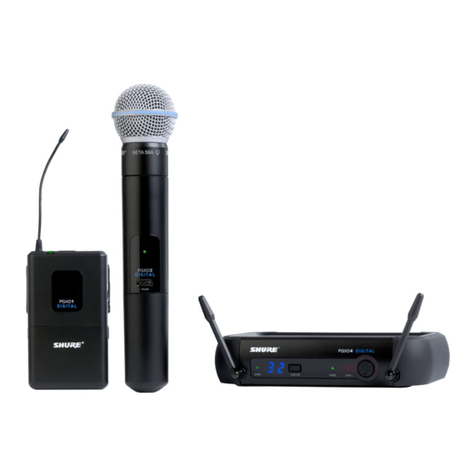
Shure
Shure PGXD quick start guide
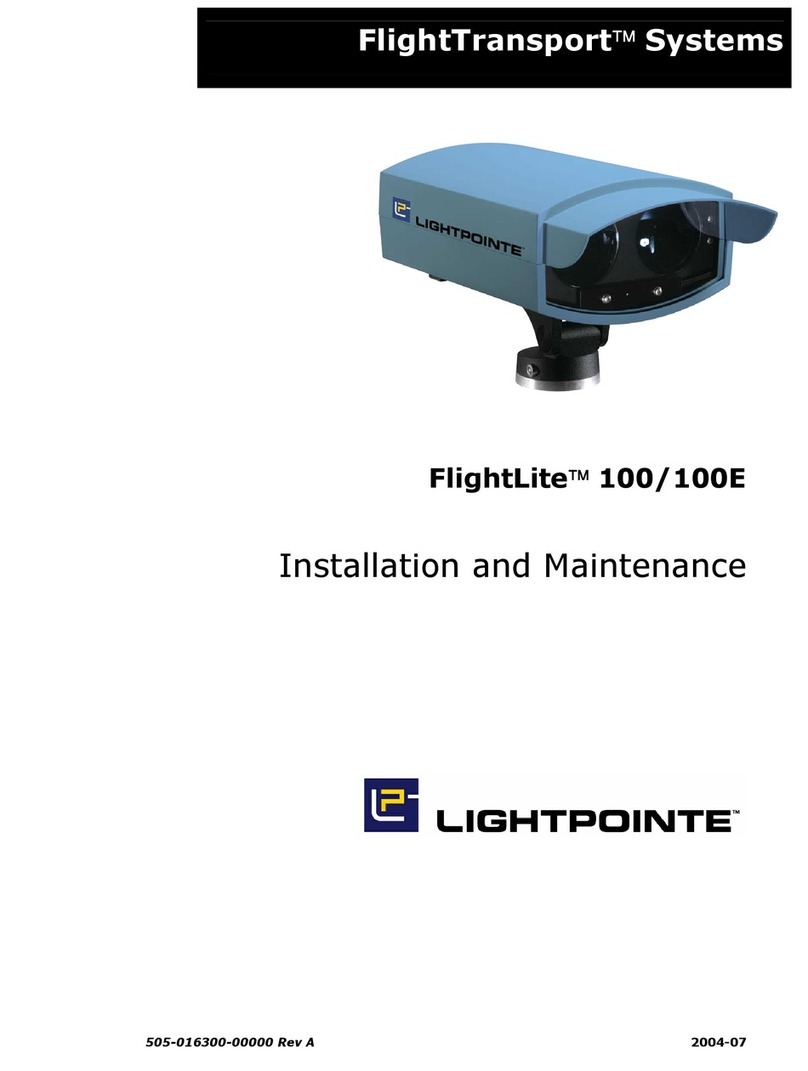
LightPointe
LightPointe FlightLite 100 Installation and Maintenance
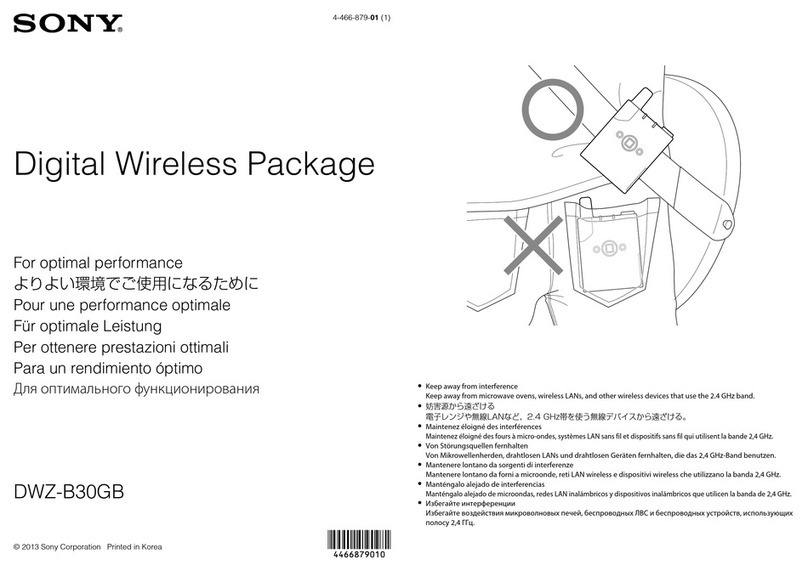
Sony
Sony DWZB30GB product manual
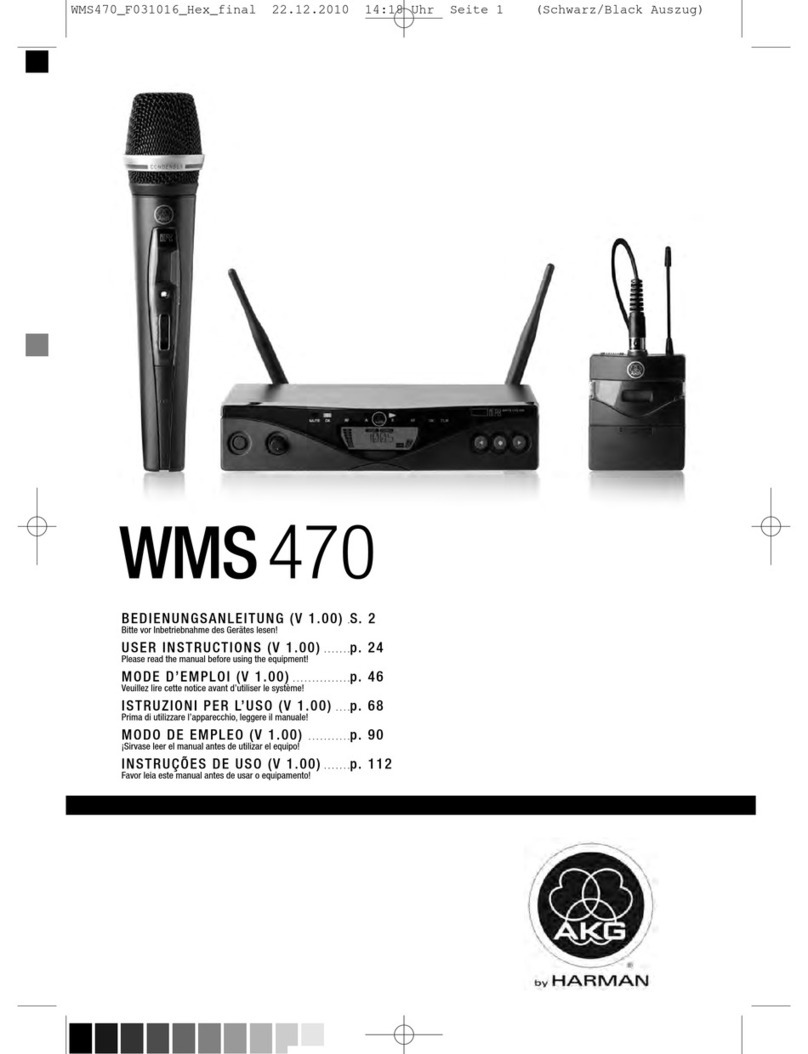
AKG
AKG WMS 470 - SERVICE User instructions
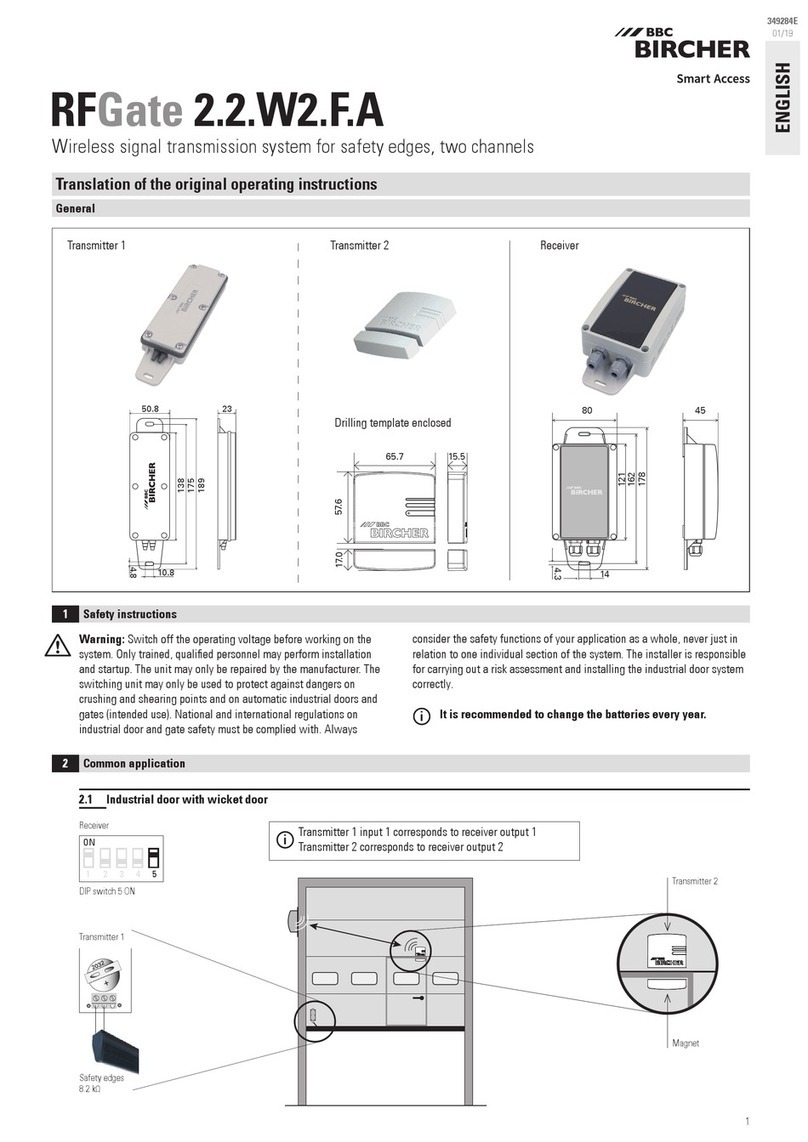
BBC Bircher
BBC Bircher RFGate 2.2.W2.F.A Translation of the original operating instructions
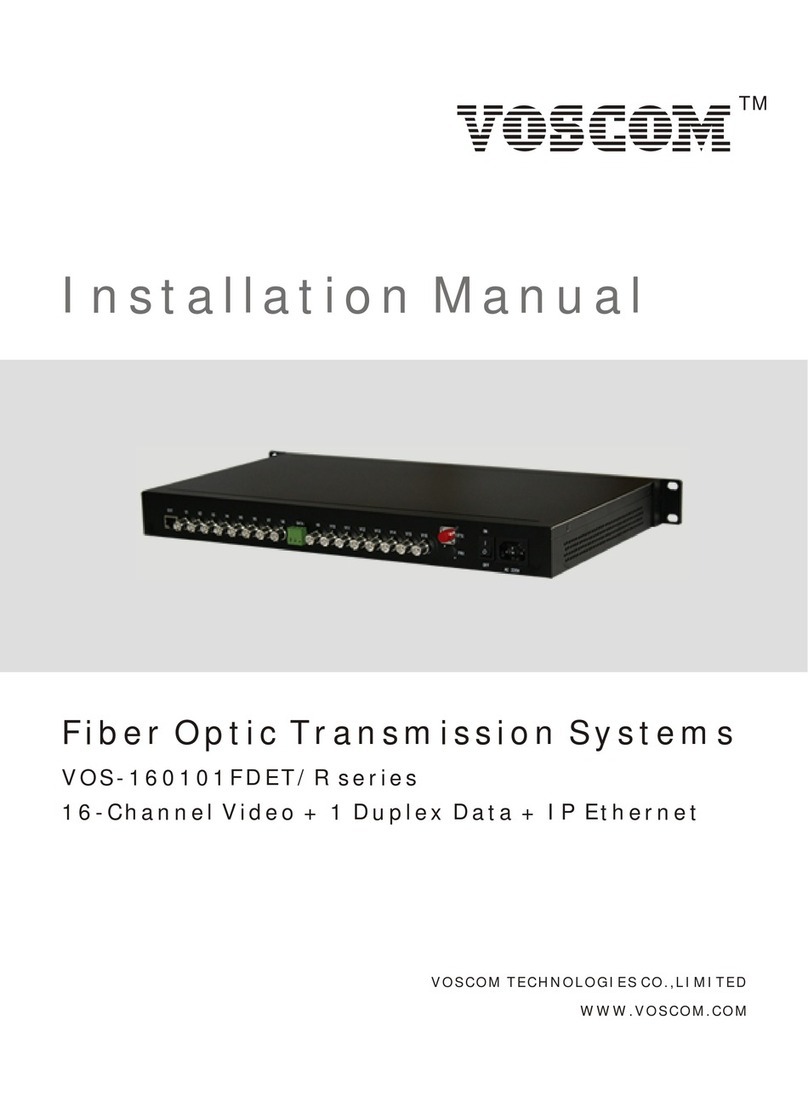
Voscom
Voscom VOS-160101FDET Series installation manual
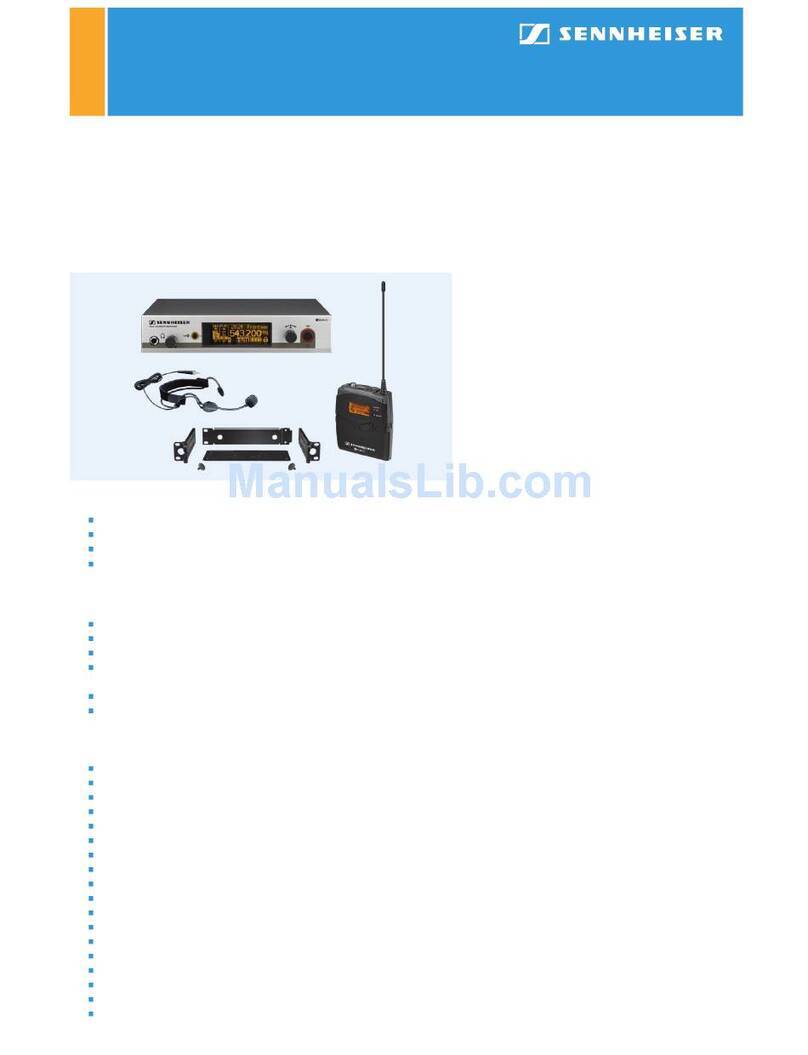
Sennheiser
Sennheiser EW 352 G3 - Product sheet
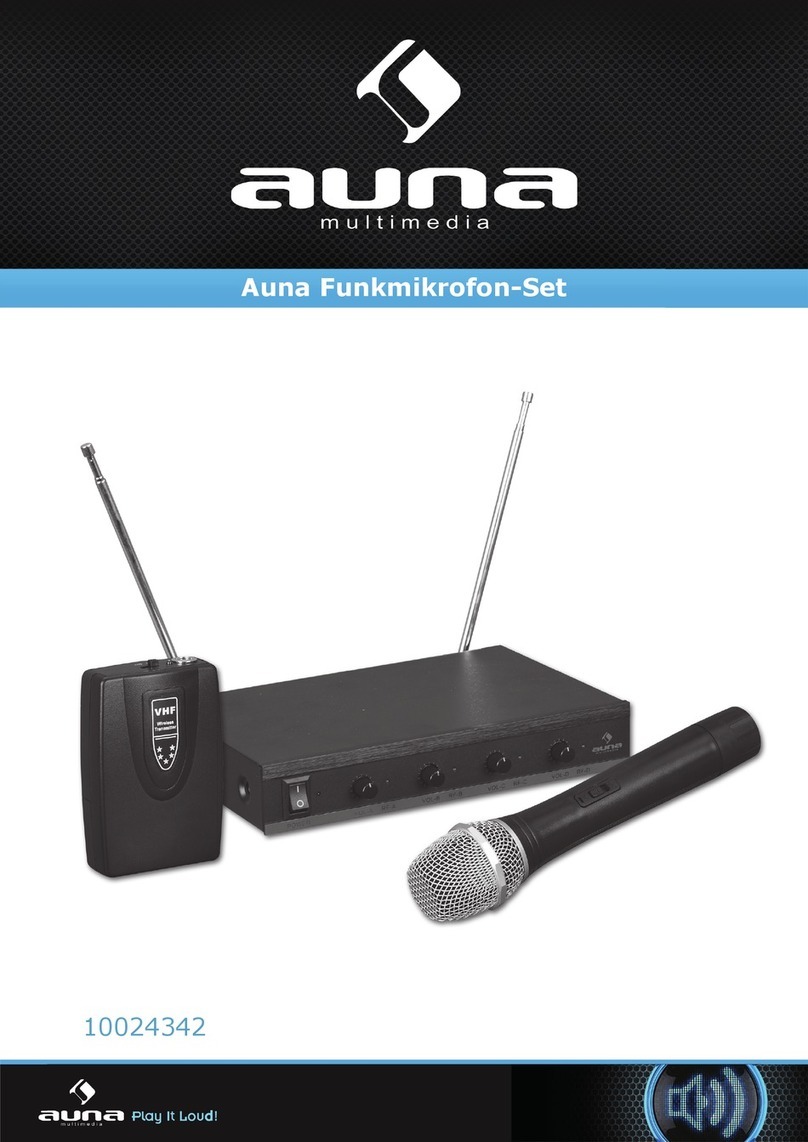
auna multimedia
auna multimedia 10024342 manual
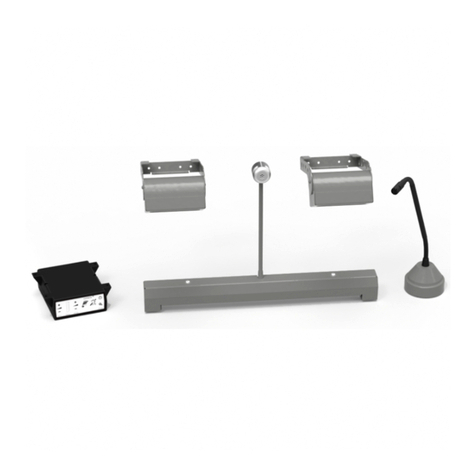
Contacta
Contacta STS-K015-01 Installation & user guide
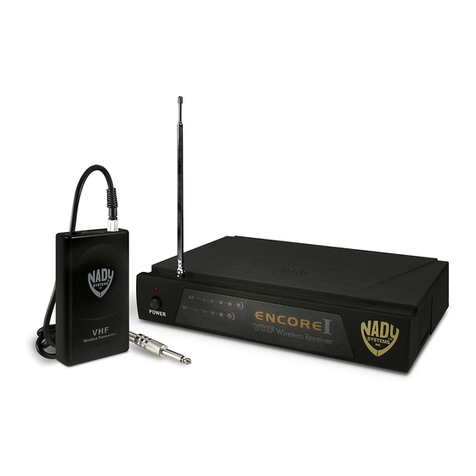
Nady Systems
Nady Systems Encore I user guide
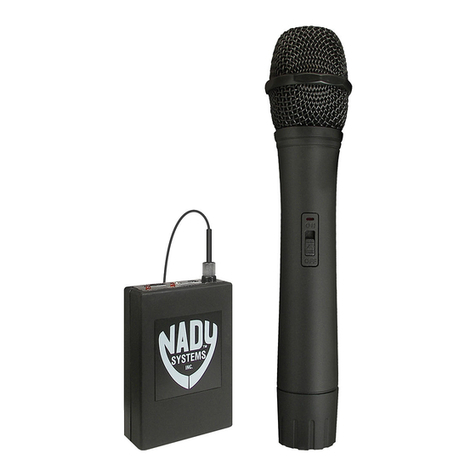
Nady Systems
Nady Systems 351 VR operating instructions
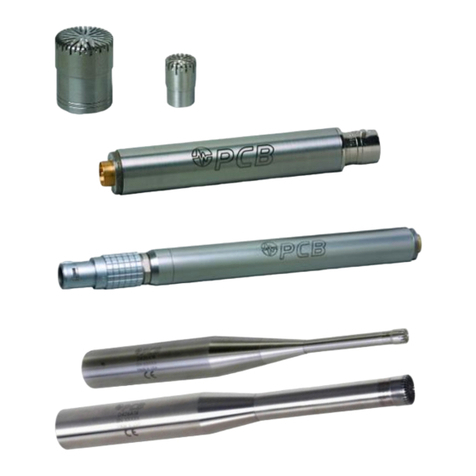
PCB Piezotronics
PCB Piezotronics 426 Series Installation and operating manual

